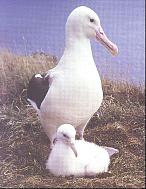
The city of Dunedin

 |
The city of Dunedin |
 |
Dunedin, the Edinburgh of the south, is in an area of great natural beauty at the end of a sheltered harbour which has provided a haven to the inhabitants of this southern land for centuries. The shape of the city, its history, and its environment all form part of the symbol chosen by the Dunedin parish of the Methodist Church of New Zealand.
At the centre of Dunedin there is an octagonal area containing lawn, flower beds, paved courtyard, water features, places to sit and relax, a statue of Robbie Burns, the Scottish poet. Through the centre of this area runs the main street of the city, which can be closed for public functions. Around the perimeter there is a street called, appropriately, the Octagon.
The Octagon encompasses the heart of Dunedin, and around it are found the Dunedin Public Art Gallery, a theatre complex, a nine-story building owned by the Methodist Central Mission, St Paul's Anglican Cathedral, and municipal buildings. On the lower side is a variety of shops and businesses. A block away is Moray Place, which continues the octagonal shape, but from there the city reverts to the familiar rectangular street pattern.
The form of the parish symbol reflects the heart of our city. Sky, hills, and sea reflect the natural beauty of our environment. The wind-blown clouds in the sky, mirrored in the sea, have a shape inspired by Maori art. And on the tip of the Otago Peninsula, at Taiaroa Head, 30km from the Octagon but still inside the city administrative boundaries, is what is believed to be the only mainland site where the royal albatross breeds. We take the albatross as a symbol of the Spirit, as in other times sailors thought of it as a bird of good omen. A verse of a Colin Gibson hymn reads:
When the clouds are low and the wind is strong,
when tomorrow's storm draws near,
be the spirit bird hov'ring overhead
who will take away our fear.

When the first Europeans "discovered" the southern part of the South Island of New Zealand, or Murihiku, its Maori residents were prosperous and confident. There was initial conflict as the Maori population and the "tongata bulla", or people of the ships, mainly whalers and sealers, came into contact. However, as they became more familiar with each other the two groups lived together in relative harmony and growing inter-dependence.
Otakou, at the head of Otago Harbour, was a major whaling village and point of contact between the two cultures, and it was here that the early Methodists, Watkin and Creed, worked before the city was established. It was at the other end of the harbour, however, that the European presence was to consolidate after members of the Free Church of Scotland, under their leaders William Cargill and the Rev'd Thomas Burns, officially selected Dunedin for settlement. The first immigrant ships, the John Wickliffe and the Philip Laing, arrived in Port Chalmers in 1848.
After initial slow progress, the discovery of gold at Gabriel's Gully and subsequent discoveries throughout Central Otago brought the province immigrants and prosperity. Dunedin became the mercantile capital of the country. But the gold rush ended, and the centres of population gradually moved north.
Dunedin has developed as a centre of education, with the University of Otago, the southernmost in the world, set up in 1869, and the teachers' college and polytechnic combining to provide a significant proportion of Dunedin's population while they are in session.
Among other things, the city is known for fostering the arts, producing chocolate and whisky, its collection of fine old buildings, its rhododendrons, and as the home of the steepest street in the world! Residents also have to endure ribbing about the supposed coolness of the climate from their cousins further north. Those who live here know we have a temperate climate which allows us to participate in a wide range of outdoor activities. Water sports are popular - it is not uncommon to see the harbour dotted with sails, and there are some excellent surfing and body boarding beaches in and around the city.
Dunedin now has a population of 107,515, according to the latest official figures. The Dunedin city administrative area, the largest such land area in New Zealand at 3700 square kilometres, has a population of 118,143 (New Zealand census 1996).
The influx of European settlers displaced the resident Maori population in terms of influence and prosperity, and it is only in very recent times that injustices towards the Maori people have been officially acknowledged, and a $170 million settlement negotiated with the Ngai Tahu people of the South Island. From here we hope to walk forward in partnership.
Ken and Elspeth McLean